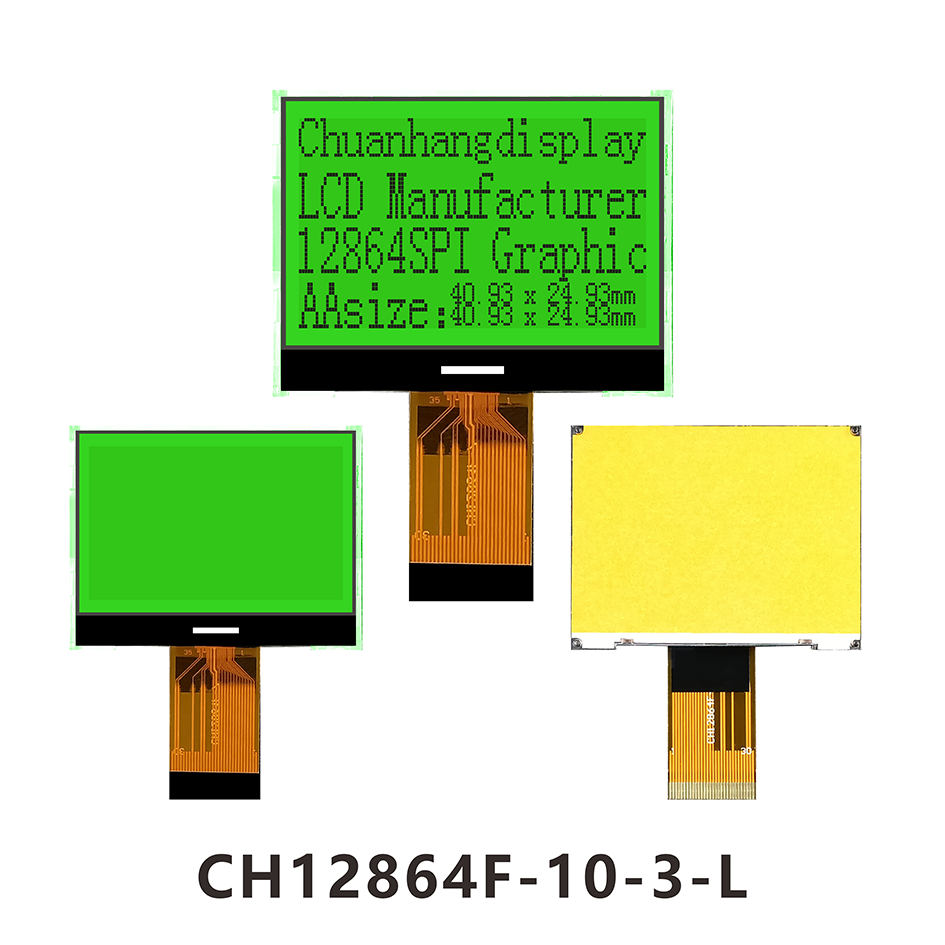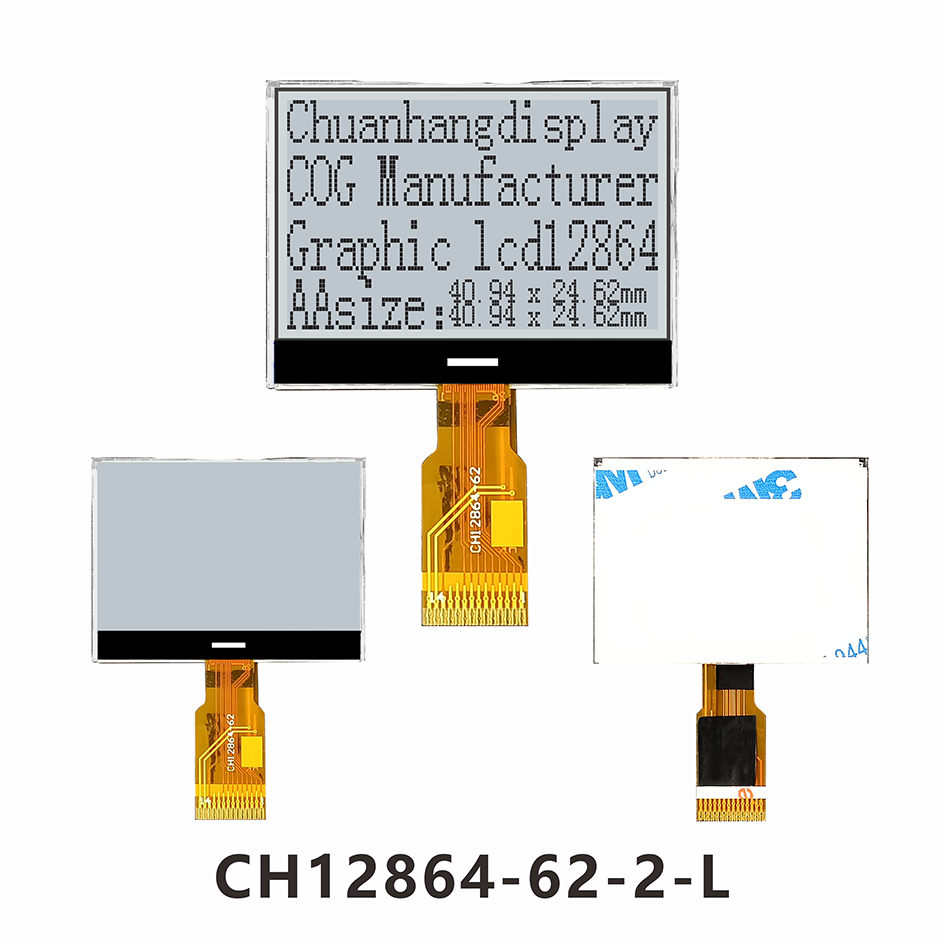In the world of embedded electronics, the display is often the critical bridge between a device and its user. Among the myriad of options available to engineers and hobbyists, one model has stood the test of time: the CH12864. This ubiquitous 128x64 pixel graphical LCD module is a workhorse found in industrial control systems, medical devices, test equipment, and countless DIY projects. But what exactly is it, and why is it so popular? This article dives deep into seven essential aspects of the CH12864 LCD, covering its technical specifications, how to use it, and how to solve common problems. We'll also explore how leading manufacturers like chuanhangdisplay ensure quality and reliability in these components.

At its core, the CH12864 is a generic designation for a family of Liquid Crystal Display (LCD) modules. The name itself breaks down into its key specification:
CH: Often denotes a Chinese origin or a specific controller chip series, though it has become a general term.
128: The number of pixels horizontally (128 pixels wide).
64: The number of pixels vertically (64 pixels high).
This makes it a graphical LCD, meaning it can display not just characters but also arbitrary graphics, bitmaps, and custom shapes. It typically features a monochrome display with a blue or yellow/green backlight, offering high contrast and excellent readability. The real brain behind the CH12864 is the controller chip it uses, most commonly the KS0108 or a compatible equivalent like the HD61202.
Understanding the specs is crucial for determining if the CH12864 is the right fit for your project. Here’s a breakdown of its common technical characteristics:
Display Resolution: 128 x 64 pixels. This provides enough space for a substantial amount of text (typically 4-8 lines of 16-21 characters each) or detailed graphics like logos and simple graphs.
Controller Chip: Most CH12864 modules use two KS0108 controllers (each controlling 64x64 pixels) or a single ST7920 controller. The controller is vital as it dictates the communication protocol.
Interface: Parallel interface is the most common, requiring about 11-13 I/O pins from a microcontroller. Many modern variants also offer a serial SPI or I2C interface, drastically reducing the required connection pins to just 3 or 4.
Backlight: Usually provided by LED lights on the side or back of the module. Common colors are blue with white text or yellow-green with dark text. The backlight requires a separate power supply, often around 3.3V to 5V.
Power Supply: The logic (VCC) typically runs at 5V, though many modern modules are also compatible with 3.3V systems.
Operating Temperature: A wide range, often from -20°C to +70°C, making it suitable for various environments.
The versatility of the CH12864 graphical LCD has led to its adoption in a massive range of applications. Its perfect balance of information density, cost-effectiveness, and reliability makes it a top choice for:
Industrial Control Panels: Used for displaying machine status, setpoints, calibration data, and diagnostic messages on manufacturing equipment.
Medical Devices: Found in portable diagnostic instruments, blood pressure monitors, and other medical equipment where clear, reliable data presentation is critical.
Test and Measurement Equipment: Oscilloscopes, multimeters, and sensor readouts use it to display waveforms, numerical values, and system menus.
Point-of-Sale (POS) Systems: Often used in smaller cash registers and terminal systems for showing transaction information.
Hobbyist and DIY Projects: A favorite in the Arduino and Raspberry Pi communities for building home automation systems, retro gaming consoles, and weather stations.

Interfacing is a key consideration. The parallel interface, while fast, uses many pins. The standard parallel connection requires pins for:
Data (D0-D7): 8 pins for sending data.
Control Pins: RS (Register Select), R/W (Read/Write), E (Enable): 3 pins.
CS1, CS2 (Chip Selects): 2 pins (for two-controller modules).
RESET (optional but recommended): 1 pin.
This totals 14 pins, which can consume most of a small microcontroller's I/O. The solution is to look for a CH12864 module with a built-in serial interface converter, such as one based on the ST7920 controller or with an附加的 SPI interface board. This reduces the connection to just a few pins (e.g., SCK, SDA, CS, and RS), saving precious I/O resources for other sensors and components. Libraries for both parallel and serial communication are widely available for platforms like Arduino and PlatformIO, simplifying the development process.
Even a reliable workhorse like the CH12864 can present challenges. Here are five common issues and their solutions.
1. Blank Display or No Initialization:
Cause: Incorrect wiring is the most common culprit. Also, check for a missing reset() command in your code or an incorrect initialization sequence.
Solution: Triple-check all connections against your pinout diagram. Ensure your code sends the proper initialization commands to the controller as per its datasheet. A small delay after power-on before initializing is often required.
2. Flickering Screen or Ghosting Pixels:
Cause: Electrical noise on the data or control lines, or an unstable power supply. A contrast voltage (V0) that is incorrectly set can also cause ghosting.
Solution: Add a small capacitor (e.g., 100µF) between the VCC and GND pins on the module to smooth the power supply. Ensure your wiring is short and secure. Use the potentiometer on the module to adjust the contrast (V0) for a clear, stable image.
3. Only One Half of the Display Works:
Cause: This is a classic sign of a two-controller module (like KS0108) where only one chip select (CS1 or CS2) is being activated. Your code is only addressing half of the screen.
Solution: In your code, you must manage both chip select pins. To draw a pixel across the entire screen, you need to switch between the two controllers based on the X-coordinate.
4. Text is Garbled or Nonsensical:
Cause: The data being sent is incorrect. This could be due to a misconfigured data bus (if in parallel mode), a timing issue, or a mistake in the character font/array stored in your code.
Solution: Verify your bus is set correctly (input/output modes on MCU). Add small delays in your code between commands to ensure the display controller has time to process them. Double-check your custom font or graphic arrays.
5. Backlight is Too Dim or Not Working:
Cause: The backlight LEDs are not receiving the correct voltage or current. This could be due to a missing current-limiting resistor or an incorrect voltage source.
Solution: Check the module's datasheet for the backlight's voltage (VLED) and current requirements. Never connect the backlight pins directly to a power source without a suitable series resistor. The value of this resistor (often between 10Ω and 100Ω) depends on your supply voltage and the LED specs.
With a generic component like the CH12864, quality can vary dramatically between suppliers. Choosing a reputable manufacturer like chuanhangdisplay is critical for avoiding the headaches of poor quality control. A professional manufacturer ensures:
Consistent Performance: Every module undergoes testing, guaranteeing it meets the advertised specifications.
Clear Documentation: They provide accurate pinout diagrams and datasheets, which are essential for successful integration.
Reliable Build Quality: High-quality materials are used for the PCB, connectors, and glass, ensuring longevity and stability across temperature variations.
Technical Support: They can offer expert advice on implementation and troubleshooting, saving you valuable development time.
Customization Options: Companies like chuanhangdisplay often offer services like custom FSTN films for wider viewing angles, different backlight colors, or pre-programmed firmware.
The CH12864 graphical LCD module remains a highly relevant and practical choice for a vast array of applications. Its strengths lie in its proven technology, excellent readability, graphical capability, and cost-effectiveness. While its parallel interface can be pin-intensive, the availability of serial versions solves this problem neatly. By understanding its specifications, knowing how to interface with it, and being prepared to troubleshoot common issues, you can effectively integrate this classic display into your design. For a smooth experience and a guaranteed reliable component, always source your CH12864 modules from a trusted supplier like chuanhangdisplay. This ensures your project's display is the last thing you'll have to worry about.